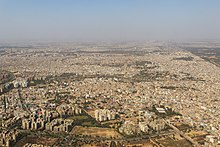
Size of this preview:
683 × 600 pixels. Other resolutions:
273 × 240 pixels |
547 × 480 pixels |
874 × 768 pixels |
1,166 × 1,024 pixels |
2,319 × 2,037 pixels.
Original file (2,319 × 2,037 pixels, file size: 1.43 MB, MIME type: image/jpeg)
File history
Click on a date/time to view the file as it appeared at that time.
| Date/Time | Thumbnail | Dimensions | User | Comment | |
|---|---|---|---|---|---|
| current | 21:54, 16 December 2013 |
 | 2,319 × 2,037 (1.43 MB) | M Tracy Hunter | User created page with UploadWizard |
File usage
The following pages on the English Wikipedia use this file (pages on other projects are not listed):
Global file usage
The following other wikis use this file:
- Usage on es.wikipedia.org
- Usage on pt.wikipedia.org
- Usage on rw.wikipedia.org
- Usage on zh.wikipedia.org

Size of this preview:
683 × 600 pixels. Other resolutions:
273 × 240 pixels |
547 × 480 pixels |
874 × 768 pixels |
1,166 × 1,024 pixels |
2,319 × 2,037 pixels.
Original file (2,319 × 2,037 pixels, file size: 1.43 MB, MIME type: image/jpeg)
File history
Click on a date/time to view the file as it appeared at that time.
| Date/Time | Thumbnail | Dimensions | User | Comment | |
|---|---|---|---|---|---|
| current | 21:54, 16 December 2013 |
 | 2,319 × 2,037 (1.43 MB) | M Tracy Hunter | User created page with UploadWizard |
File usage
The following pages on the English Wikipedia use this file (pages on other projects are not listed):
Global file usage
The following other wikis use this file:
- Usage on es.wikipedia.org
- Usage on pt.wikipedia.org
- Usage on rw.wikipedia.org
- Usage on zh.wikipedia.org





